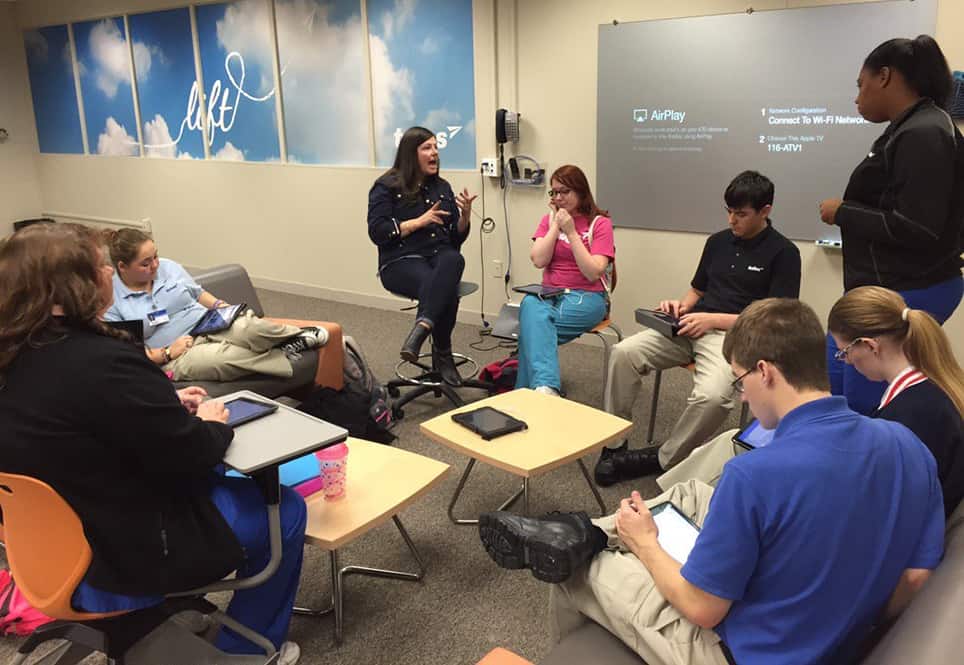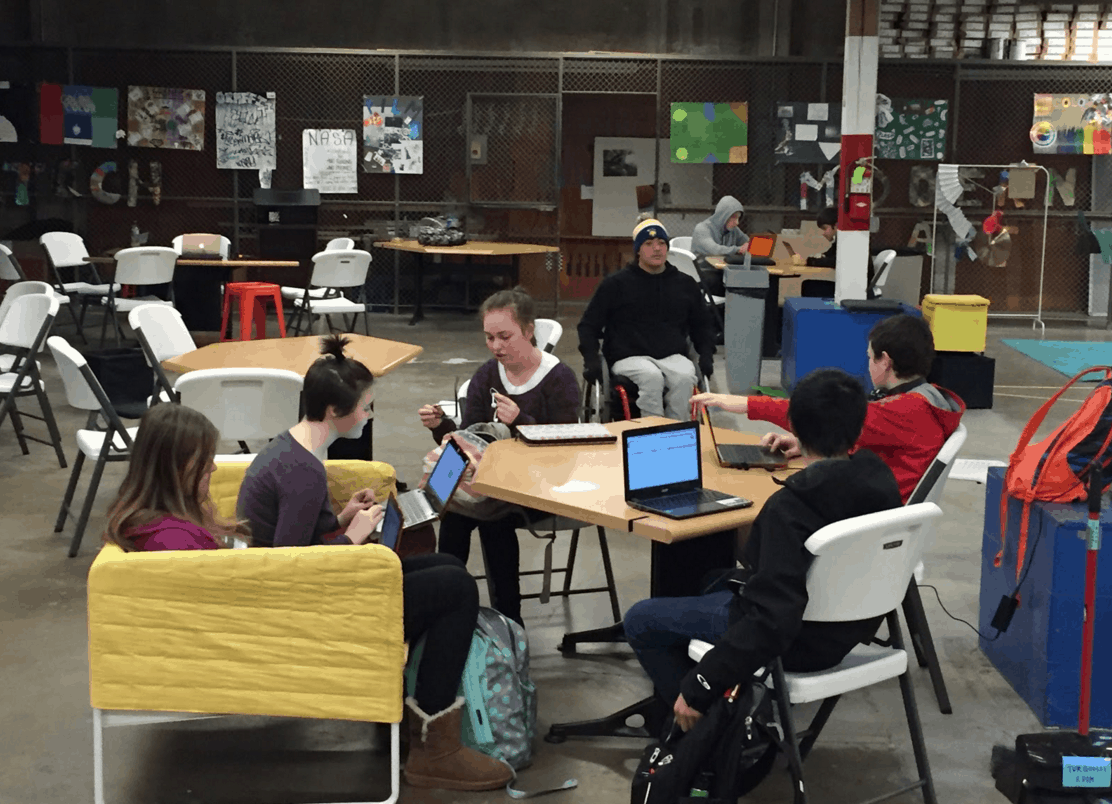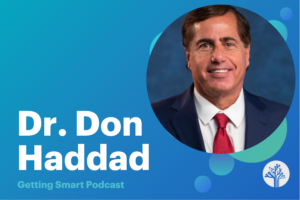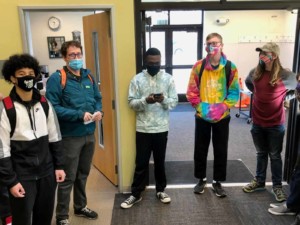What Learning Will Look Like in 2035

We’re living through a revolution in how human beings learn and develop. We’re two decades into the ‘anyone can learn anything’ era and it’s translating into big changes in formal education worldwide. Unbelievable progress will be made in the next two decades. For example, my grandkids will be able to vote about the time that artificial intelligence becomes smarter than we are.
Despite my optimism about learning innovations, no one can predict the future. Few predicted the 10% stock market correction in January, nobody predicted the 70% drop in the price of oil (from $94 per barrel on 6/30/14 to $27 per barrel last week). Nobody saw September 11… or ISIS coming (or the unfortunate link between the two). Nobody saw World War I, or the Internet, or the collapse of the Soviet Union.
These unexpected high-profile Black Swan events are important developments that are way outside anyone’s forecast. They seem to be happening more frequently given the collision of complex human systems, exponential technology (Moore’s Law etc.), and the climate that we’ve increasingly messed with. What makes these unexpected events more worrisome is the concomitant loss of civic capacity and collective problem solving ability (as evidenced by the early U.S. presidential campaigns).
With some certainty we can project five megatrends a decade or two into the future:
- Tech: We’re living on an exponential curve but our brains make linear projections. When it comes to new technology, almost everything is closer than it appears.
- Smart AI: Artificial intelligence, the new infrastructure for everything, will progress rapidly and in the next decade will be better at a lot of things than we are.
- Cities: People are moving to cities and, according to Harvard’s Ed Glaeser they make us richer, smarter, greener, healthier, and happier. We think that will require a pretty thick layer of intermediation.
- Careers: It’s a project-based world; the influence of the freelancing and the gig economy will rise.
- Relationships: The first 20 years of digital learning suggest that most human beings learn and grow in relationship; technology can help but our brains value face-to-face interaction.
With those caveats and assumptions, here are 40 predictions (more projections of possible futures with a dose of optimistic thinking) about learning in 2035. Many of these things will be common in U.S. and developed countries by 2025, politically challenging items will take longer in some places. Add smart AI in the 2030s and things get murky.
Access to Learning
- Early learning opportunities will be available on a means-tested basis for every three and four year old.
- 5 screen days will be common for most learners including wearable tech, mobile tech, production tech, visualization tech, and presentation tech (and they’ll all work together seamlessly).
- Broadband will be nearly ubiquitous even in rural and urban environments.
- Inputs will be visual, gestural, and via next gen keyboards while handwriting will join calligraphy in art class (listen to a Freakonomics podcast on handwriting). Many of the things we wear and interact with will also be providing inputs to our smart assistants.
- Virtual reality will be a daily part of world exploration and career awareness.
- Open learning experiences will be widely available from many sources most tagged in common ways, many with embedded assessments that contribute evidence to competency-based systems that mark progress.
- Neurobiology will present opportunities and controversies around pharmacology, augmentation, and implantation.
Education
- Weighted, portable, flexible funding will support a variety of pre-career (now primary and secondary) education programs (read more). Portability will support a wide range of community learning experiences (and weighting means that low income families will have more to spend on rich learning experiences).
- Learning platforms will use recommendation engines and dynamic scheduling to suggest personalized customized digital learning playlists and team-based community connected projects.
- Learner profiles will capture keystroke data and provide instant feedback in simple data visualizations.
- Progress will be marked by demonstrated mastery on multiple assessments (some from formal settings, some from informal self-directed or community-based learning).
- Portfolios will capture artifacts of student work with associated references (i.e., a proctor or collaborator).
- Time and place of learning will be far more diverse than today. Learning hubs will replacing factory-like buildings with big open spaces that point students to community, virtual, and collaborative environments.
- Learning options will continue to increase; most secondary learners will concurrently engage with multiple providers (formal and informal) including online schools, learning differences specialist, travel and work-based experiences, and more.

Design Tech High
Aims
- Success skills including self-management, wellness, project management, civic engagement and collaboration will be core developmental outcomes with common metrics and visualization techniques (read more).
- Dual language (and multilanguage) immersion and fluency will be a common expectation.
- Data science (including data wrangling, analysis and visualization) will be a required success skill and more important than coding (which will often be done by machines).
- Enterprise, how to create and change organizations, build sustainable business models, and innovate to create value, will be a commonly sought certificate.
- Expression, the ability to create and share music, art, and language, will be supported by a wide range of blended opportunities.
Relationships
- Parent-managed learner profiles will protect student privacy and promote personalization as they are shared in whole or in part with learning providers (read more).
- Advisors or learning coaches will be available for every learner and family to help navigate all the learning options, create postsecondary plans, and make connections to youth and family services. Virtual mentoring will be frequent and powerful.
- Learner relationship management systems will connect learners advisors, teachers, and parents (read more).
- Smart assistants (like Zuckerberg’s robot) will make learning and experience recommendations, make connections, schedule events, and help collect artifacts of learning.
- Businesses and impact organizations will provide short term project-based work experiences to young people (facilitated by a geo-profile matching system). Demonstrated knowledge and skills will contribute to competency-based progress (i.e., learning can happen on the job as well as home and school) as well a portfolios and references.
Facilities
- Facilities development and management in many geographies will be done by private developers or public trusts rather than learning providers in facilities-as-a-service transactions (read more).
- Custodial services will remain popular. Most students from age 4-16 will spend most of their time at an educational facility. Despite the shift from school-as-a-place to learning- as-a-service, most parents will value a safe and supportive place to send junior most days.
- Big open spaces that are flexible and reconfigurable will characterize most education facilities (read more). As Elliot Washer would say, “More outside in, more inside out.”
- Friday Night Lights will continue to be the most important secondary school consideration for ten years but health concerns and the pull of employability will begin to win out by 2035 when small community connected facilities become more prevalent.
- Selective athletics, in many communities, will shift to club-based sports, and educational facilities will provide more participation-based fitness activities.
Governance
- Performance contracting will be used to provision public education in many states. However, there will still be school boards in a few states adopting social studies textbooks three decades after that made any sense.
- Local councils will (as Paul Hill suggested 20 years ago) will guide decisions about what kinds of service providers their children need but they won’t operate schools.
- Multiple providers will support the blended and online learning plans of individual teenage learners.
Degrees
- High school diplomas and college degrees will still be around but they will be part of a competency-based system of stackable credentials.
- Free, low cost, and means-tested higher education options will be widely available.
- Market signaling will be augmented by portfolios of work and references (i.e., a degree as a proxy for competence will be replaced by credentials+portfolio+references in most fields).
- Micro-credentialing, sequences of demonstrated competence, will replace licensure systems in education, engineering, medicine, law, and accounting. Dynamic job clusters will place more value on measures of demonstrated competence.
- Lifelong learning will be the mission of most universities where initial certificates and degrees are just the beginning of a long term developmental partnership where a mobile application powers a personal learning plan.
Ecosystems
- Community capacity to incubate tools, talent, and learning environments will exist in most metro areas.
- Portable pensions, reciprocity agreements, and common professional recognition systems will allow educators to support multiple providers and move from one region to another seamlessly.
- Youth and family services will be widely available and well coordinated supported, in part by portable weighted funding (i.e., kids that need more help get more funding).
We don’t know what learning will look like in 2035 but we can predict a wider variety of approaches and options; instead of school choice, it will be experience choice; instead of a focus on coherent school models, we’ll focus on coherent learning pathways. Education 2035 won’t cost more (in real terms) and will work better for more learners. But progress over the next two decades will be uneven improving rapidly where innovators collaborate.
For more, see:
Stay in-the-know with all things EdTech and innovations in learning by signing up to receive the weekly Smart Update. This post includes mentions of a Getting Smart partner. For a full list of partners, affiliate organizations and all other disclosures please see our Partner page.







0 Comments
Leave a Comment
Your email address will not be published. All fields are required.